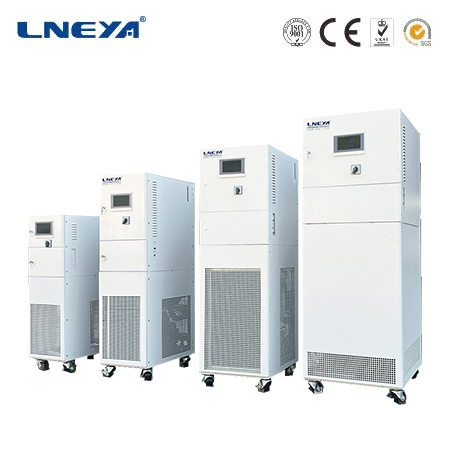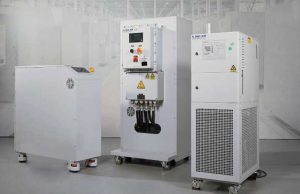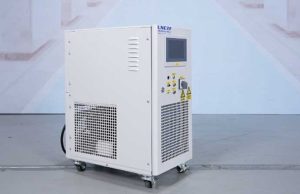How do semiconductor CVD and PVD chillers work?
The working principle of the chillers used in semiconductor chemical vapor deposition (CVD) and physical vapor deposition (PVD) processes is mainly to remove the heat generated during the process by circulating cooling water or special coolants to ensure that the temperature of the equipment and reaction environment is stable within a precise range. Although both are deposition technologies, the specific applications of chillers in the two processes are different, and their working methods can be summarized as follows:
How the chillers in chemical vapor deposition (CVD) work:
Heat removal: During the CVD process, chemical reactions release a lot of heat. The chiller effectively absorbs this heat by circulating coolant in the cooling system through the external or internal cooling structure of the reaction chamber (such as cooling coils or heat exchangers), preventing the chamber or reactants from overheating and maintaining stable reaction conditions.
Precise temperature control: Chillers are usually integrated with precision temperature control systems, such as PID controllers, which can accurately adjust the temperature and flow of the coolant according to the set point to ensure that the temperature of the reaction chamber is controlled within the range required by the process, which is crucial for controlling the chemical reaction rate and product quality.
Stability and efficiency: The design of the chiller focuses on energy efficiency and stability to ensure that stable cooling performance can be maintained under long-term continuous operation, which is very important for the continuous production of the CVD process.
How the chiller works in physical vapor deposition (PVD):
Thermal management: A lot of heat is also generated during the PVD process, especially during sputtering or evaporation coating. The chiller also uses a coolant circulation system to cool the target, vacuum chamber wall or other parts that need to be cooled to prevent excessive temperature from affecting the quality and uniformity of the deposited layer.
Temperature uniformity: In PVD, the chiller helps maintain temperature uniformity throughout the deposition area, which is crucial for obtaining high-quality thin film coatings. Through precise temperature control, defects can be reduced and the adhesion and performance of the film layer can be improved.
Equipment protection: In addition to direct temperature control, the chiller also plays a role in protecting PVD equipment to avoid equipment damage or performance degradation caused by high temperature.
In summary, whether it is CVD or PVD, the chiller maintains the temperature stability of the equipment and process by circulating cooling medium to ensure precise process control and product quality. This requires the chiller to have high-precision temperature regulation capabilities, stable performance, and good integration with process equipment.
- Details
FLT-100℃~90℃
Single channel air-cooled cooler, mainly designed for etching machines. It is used to provide independent temperature control for the chamber sid…
- Details
FLTZ -45℃~90℃
Heating method within 40 ℃ adopts a compressor hot gas heating fully enclosed design, and the machine operates continuously for 24 hours The semiconductor temperature control device Chiller is mainly used for p…
loading…
已经是到最后一篇内容了!
Related recommendations
-
Expansion Tanks in Semiconductor Chillers
1542Expansion tanks stabilize semiconductor chillers, avoiding costly downtime and protecting sensitive equipment from pressure swings.
View details -
Low GWP Refrigerants in Semiconductor Chillers
1567Low GWP refrigerants in semiconductor chillers cut carbon impact, meet regulations, and keep fabs efficient with eco-friendly cooling solutions.
View details -
What Is a High Precision Chiller
1192High Precision Chillers deliver ±0.02°C stability for semiconductors, pharma, lasers, and labs, ensuring reliable performance and energy savings.
View details -
Which process in semiconductor manufacturing requires a multi-channel chiller? Why is it necessary?
1482Chemical Vapor Deposition (CVD): In the CVD process, a multi-channel chiller is used to cool the reaction chamber walls, heat exchangers, and gas preheating exchangers to maintain stable reaction chamber temperature, ensuring precise contro...
View details
 LNEYA Industrial Chillers Manufacturer Supplier
LNEYA Industrial Chillers Manufacturer Supplier














